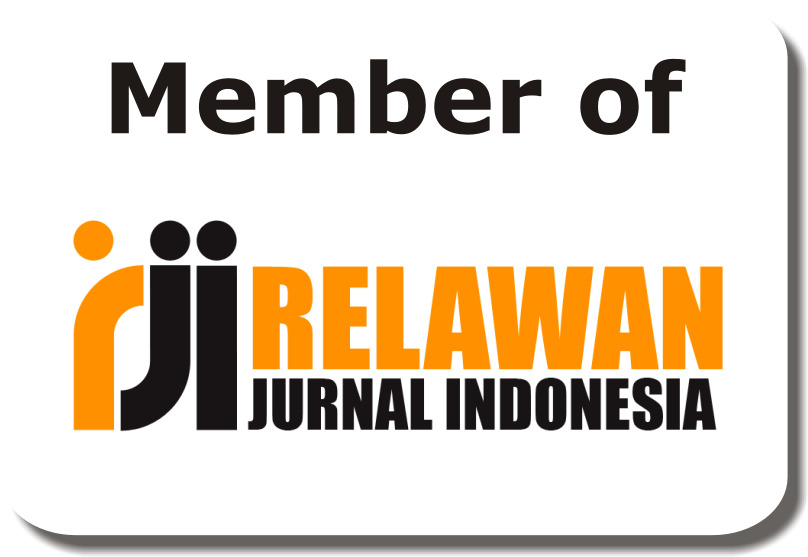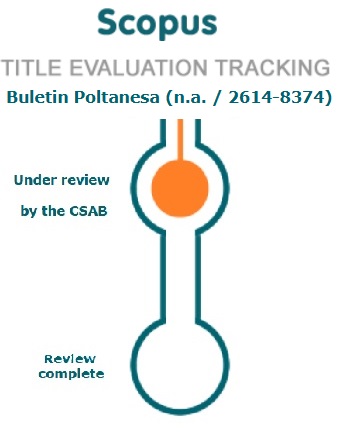Evaluation of HRM Strategies to Enhance Nurse Performance at RSU Muhammadiyah Cirebon
DOI:
https://doi.org/10.51967/tanesa.v26i1.3349Keywords:
HR Management, Nurse Performance, Training, Performance Evaluation, Patient SatisfactionAbstract
This study aims to evaluate human resource (HR) management strategies in enhancing nurse performance at the Muhammadiyah University of Cirebon General Hospital (RSU UMC). A qualitative research approach was employed, utilizing case study and phenomenological methods through in-depth interviews, observations, documentation reviews, and questionnaires. The findings reveal that HR strategies such as selective recruitment, continuous training, and performance evaluation have been implemented and have shown a positive impact on nursing competence and service delivery. However, several challenges remain that hinder the full effectiveness of these strategies. These include high workload pressures, training content that is not entirely relevant to daily practice, performance evaluations that focus mainly on quantitative measures, and an incentive system perceived as inequitable. Furthermore, poor interprofessional communication and uneven distribution of tasks further reduce job satisfaction and motivation among nurses, ultimately affecting the quality of patient care. These limitations indicate that the current HR strategy needs to be improved and made more responsive to the real needs faced in the field. Based on the results, this study recommends the development of a more integrated HR strategy that emphasizes needs-based and adaptive training, a comprehensive and balanced performance evaluation framework, and a fair reward system that values service quality over quantity. Such improvements are essential to foster a supportive and motivating work environment, leading to increased nurse performance, higher job satisfaction, and improved patient satisfaction. This research contributes valuable insights for hospital management in designing effective HR strategies in healthcare settings.
References
Al Ma'mari, Q., & Sharour, L. A. (2020). Fatigue, burnout, work environment, workload and perceived patient safety culture among critical care nurses. British Journal of Nursing, 29(1), 28–34. https://doi.org/10.12968/bjon.2020.29.1.28
Al-Qathmi, H., & Zedan, H. (2021). Developing an incentive model for hospital nurses based on service quality. International Journal of Health Planning and Management, 36(2), 387–399. https://doi.org/10.1002/hpm.3061
Banakhar, M. A., Baljoon, R. A., & Banjar, H. E. (2018). Nurses’ work motivation and the factors affecting it: A scoping review. Open Journal of Nursing, 8(6), 63–75.. https://www.researchgate.net/publication/325496003
Boito, D. (2024). Pay for performance nursing compensation models: Value-based compensation through performance incentives [Master’s thesis, University of Pittsburgh]. http://d-scholarship.pitt.edu/46240
Buchan, J., & Aiken, L. (2018). Solving nursing shortages: A common priority. Journal of Clinical Nursing, 17(24), 3262–3268.https://doi.org/10.1111/j.1365-2702.2008.02636.x
Cogin, J. A., Ng, J. L., & Lee, I. (2016). Controlling healthcare professionals: How human resource management influences job attitudes and operational efficiency. Human Resources for Health, 14(1), 55. https://doi.org/10.1186/s12960-016-0149-0
Gile, P. P., Buljac-Samardzic, M., & Van der Klundert, J. (2018). The effect of human resource management on performance in hospitals in Sub-Saharan Africa: A systematic literature review. Human Resources for Health, 16(1), Article 34. https://doi.org/10.1186/s12960-018-0298-4
Gunawan, J., Aungsuroch, Y., & Fisher, M. L. (2019). Competence‐based human resource management in nursing: A literature review. Nursing Forum, 54(1), 91–101. https://doi.org/10.1111/nuf.12302
Jing, H. (2018). Human resource management strategies for increasing hospital employee satisfaction and engagement [Doctoraldissertation,ISCTE-IUL]. https://repositorio.iscte-iul.pt/handle/10071/17934
Kaiser, D. A. (2015). The retention and motivation of top performers in healthcare: A qualitative study in nursing today. ProQuest Dissertations Publishing.
Kvist, T., Voutilainen, A., & Mäntynen, R. (2014). The relationship between patients' perceptions of care quality and three factors: Nursing staff job satisfaction, organizational characteristics and patient age. BMC Health Services Research, 14, Article 466. https://link.springer.com/article/10.1186/1472-6963-14-466
Makhamara, F. H. (2017). Influence of strategic human resource management practices on employee performance in level five public hospitals in Kenya [PhD thesis, JKUAT]. http://ir.jkuat.ac.ke/handle/123456789/3437
Matsumoto, A. (2019). Effective human resource management strategy for hospital nursing organizations. Management Science Letters, 9(14), 2413–2420. https://doi.org/10.5267/J.MSL.2018.11.015
Melanson, D. (2024). Full-time nursing faculty's perceptions of extrinsic workload factors [Doctoral dissertation, Walden University]. https://scholarworks.waldenu.edu/dissertations/16628
Mirera, J. M. (2020). The role of human resource management practices on motivation of health care workers in Machakos County [Master’s thesis, Strathmore University]. https://su-plus.strathmore.edu/handle/11071/10237
Ongori, J. M. (2019). Human resource management practices influencing performance of nursing officers in Nyeri County, Kenya [Master’s thesis, Kenyatta University]. http://41.89.31.5:8080/handle/123456789/767
Pérez-Francisco, D. H., & Duarte-Clímets, G. (2020). Influence of workload on primary care nurses' health and burnout, patients' safety, and quality of care: Integrative review. Healthcare, 8(1), Article 12. https://doi.org/10.3390/healthcare8010012
Ployhart, R. E. (2015). Staffing in the 21st century: New challenges and strategic opportunities. Journal of Management, 32(6), 868–897. https://doi.org/10.1177/0149206306293625
Purnawati, Y., & Martiana, T. (2020). The analysis of workload and safety communication against burnout syndrome in inpatient nurses.
Raj, M., & Ling-Meng, C. (2024). Revisiting Herzberg’s Motivation Theory: Implications for modern nursing management. Journal of Health Psychology and Leadership, 12(1), 77–89. https://doi.org/10.1016/j.jhpl.2024.01.005
Raj, M., & Ling-Meng, C. (2024). Revisiting Herzberg’s motivation theory: Implications for modern nursing management. Journal of Health Psychology and Leadership, 12(1), 77–89. https://pjlss.edu.pk/pdf_files/2024_2/5891-5905.pdf
Sims, T. (2024). Successful strategies human resource managers use to retain nurse practitioners [Doctoral dissertation, Walden University]. https://scholarworks.waldenu.edu/dissertations/18156
Swedana, I. N. (2023). The role of workload and work motivation in influencing performance through job satisfaction. Ekonomika Journal of Management, 12(2), 157–170. http://ecojoin.org/index.php/EJM/article/view/1309
Ukponahiusi, O., & Ahuru, R. (2024). Linking nurse incentive strategies to retention and patient satisfaction: A qualitative exploration. Nursing Management Review, 18(1), 44–53. https://doi.org/10.1111/nmr.13689
Ukponahiusi, O., & Ahuru, R. R. (2024). A systematic review of the impact of incentives on job performance among healthcare workers in Africa. African Journal of Social and Behavioural Sciences, 14(1), 100–115. https://journals.aphriapub.com/index.php/AJSBS/article/view/2989
Wang, R. S., Wang, X., Qin, X., & Huang, Y. N. (2024). Exploring human resource management in the top five global hospitals: A comparative study. Frontiers in Public Health, 11, Article 1307823. https://doi.org/10.3389/fpubh.2023.1307823.
Williamson, L., & Burog, W. (2022). A scoping review of strategies used to recruit and retain nurses in the health care workforce. Journal of Nursing Management, 30(8), 3892–3901. https://doi.org/10.1111/jonm.13786
Zainafree, I., Saputra, M. G., & Raharjo, B. B. (2025). The relationship between motivation, compensation, rewards and workload with nurse performance. International Conference on Health Science and Public Health Education, 5,137–146. https://proceeding.unnes.ac.id/icohespe/article/view/4073
Downloads
Published
How to Cite
Issue
Section
License
Copyright (c) 2025 Buletin Poltanesa

This work is licensed under a Creative Commons Attribution-ShareAlike 4.0 International License.
The copyright of this article is transferred to Buletin Poltanesa and Politeknik Pertanian Negeri Samarinda, when the article is accepted for publication. the authors transfer all and all rights into and to paper including but not limited to all copyrights in the Buletin Poltanesa. The author represents and warrants that the original is the original and that he/she is the author of this paper unless the material is clearly identified as the original source, with notification of the permission of the copyright owner if necessary.
A Copyright permission is obtained for material published elsewhere and who require permission for this reproduction. Furthermore, I / We hereby transfer the unlimited publication rights of the above paper to Poltanesa. Copyright transfer includes exclusive rights to reproduce and distribute articles, including reprints, translations, photographic reproductions, microforms, electronic forms (offline, online), or other similar reproductions.
The author's mark is appropriate for and accepts responsibility for releasing this material on behalf of any and all coauthor. This Agreement shall be signed by at least one author who has obtained the consent of the co-author (s) if applicable. After the submission of this agreement is signed by the author concerned, the amendment of the author or in the order of the author listed shall not be accepted.








